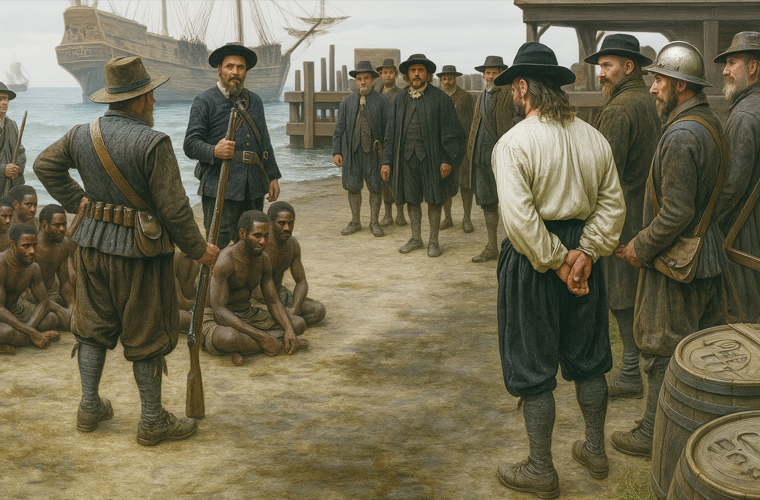Africans subjected to the Middle Passage originated from diverse regions along Africa’s west coast, from Senegambia in the north to the Slave Coast (modern-day Benin and western Nigeria) and West-Central Africa. As the slave trade expanded, captives were increasingly drawn from deeper inland, transforming African societies as farmers became raiders, traders, or refugees. Most were prisoners of war, petty criminals, or ordinary people kidnapped by African traders, often spurred by European-fueled conflicts designed to generate captives. Their religious beliefs varied, with some, particularly in Angola, exposed to Christianity via Portuguese missionaries. Languages differed but were often mutually intelligible within regions, creating both opportunities for unity and risks of conflict aboard ships. Captains faced a dilemma: chaining together those who could communicate risked rebellion, while chaining those who couldn’t risked disputes born of misunderstanding.
Conditions Aboard
The physical toll of captivity was immense. Two-person leg irons and sometimes wrist manacles caused pain and restricted movement, especially when accessing the “necessary bucket.” Some captains restrained only minimally, particularly for ethnic groups less likely to revolt. Captives spent sixteen hours daily in the hold, emerging for eight hours, weather permitting, to eat twice and engage in forced “dancing” or singing for exercise—painful for those shackled.
Fear and Resistance
Aboard the ships, Africans lived in constant fear, separated from loved ones and communities, and subjected to brutal punishments and sexual exploitation. Many believed Europeans intended to kill and eat them, a fear some African elites encouraged to control their people. Resistance took many forms: some leapt overboard to their deaths, others refused food, only to face the speculum oris, a device that forcibly opened their jaws. Hunger strikers were treated harshly to deter others. Despite these challenges, revolts occurred, carefully planned despite communication barriers, small group sizes, and ethnic tensions. Military experience and familiarity with European firearms aided some rebels. Successful uprisings, like that on the Clare in 1729, were rare; most, like the 1785 “ghost ship” incident, ended in mass death or brutal reprisals.
Arrival and Sale
Survivors reaching Virginia were cleaned, oiled to enhance their appearance, and sold either in chaotic shipboard “scrambles” or at shore markets. Bonds formed through shared suffering dissolved as captives were separated again, assigned English names, and stripped of their identities. As historian Marcus Rediker notes, they boarded as Igbo, Fante, or Ndongo but disembarked as enslaved and racialized as Black.

